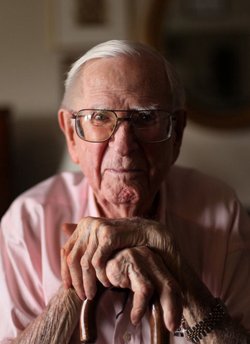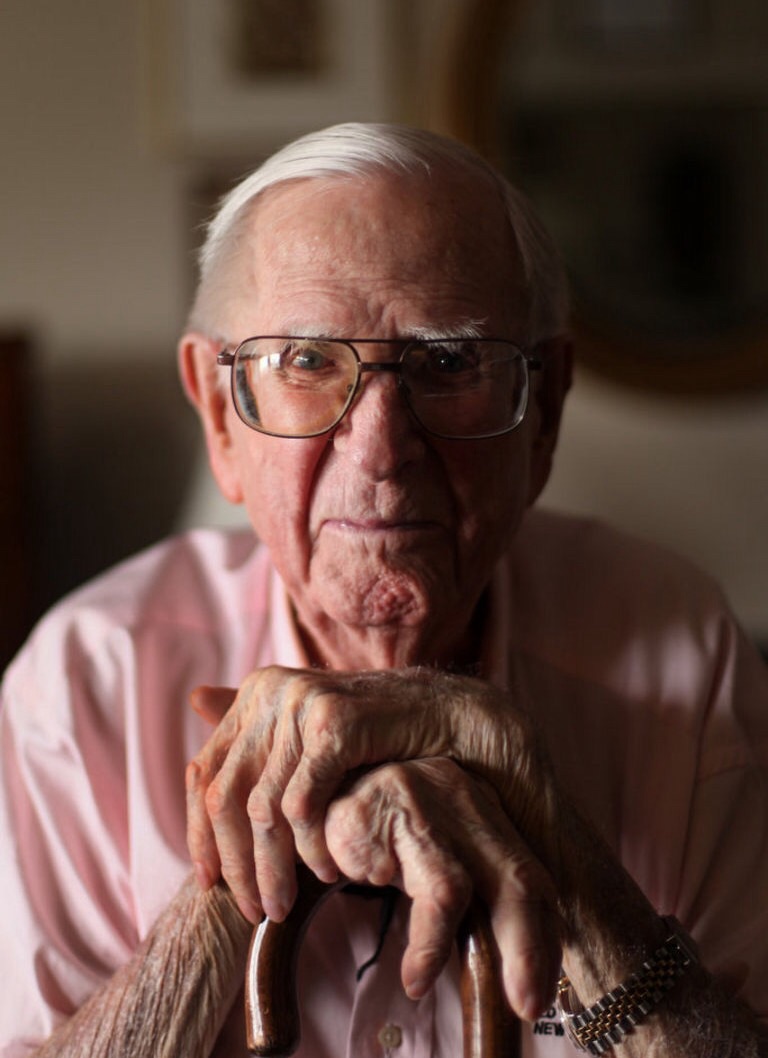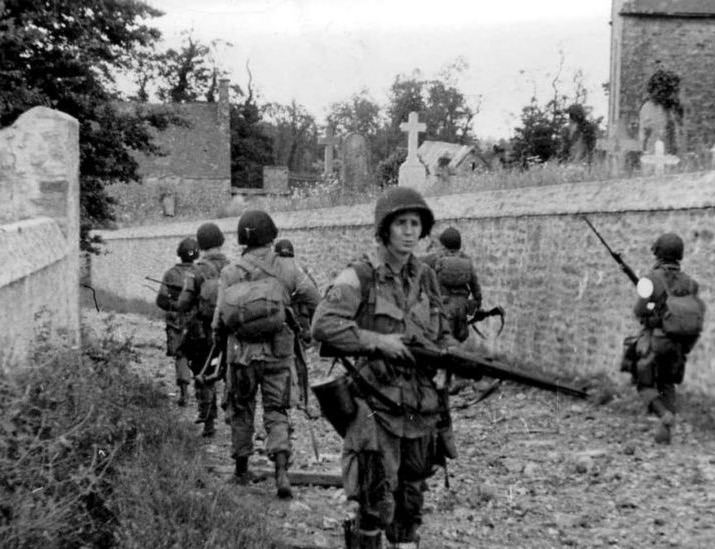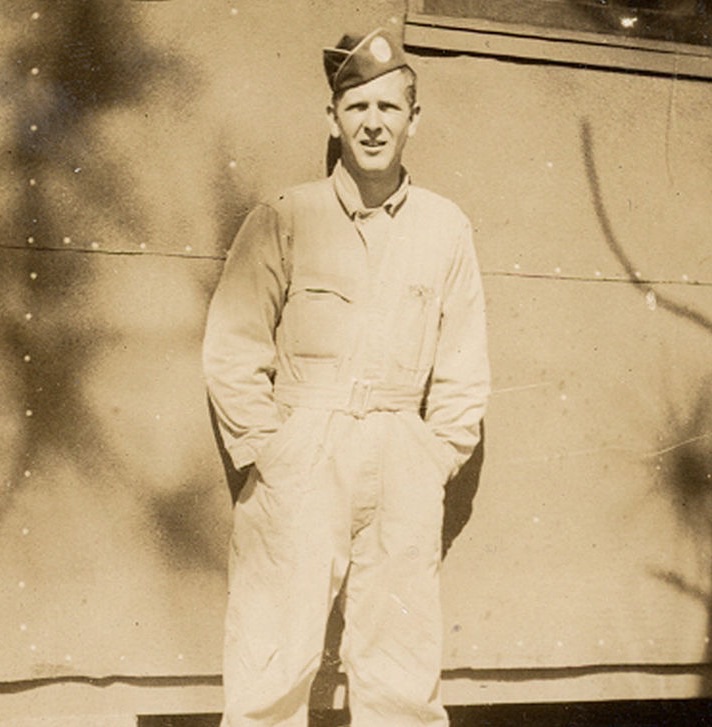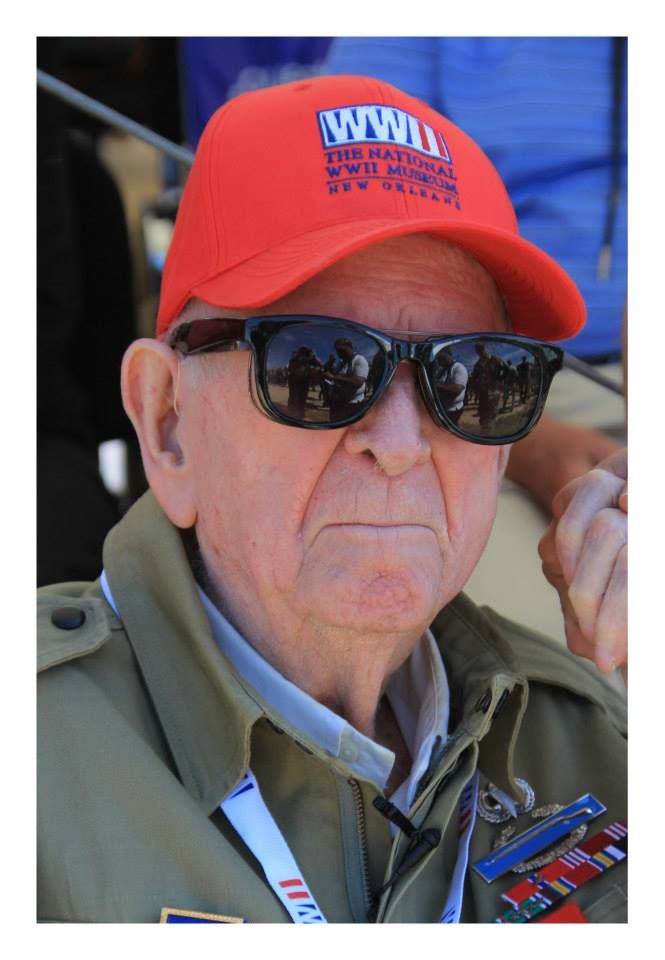Mr. Blakey, a native of Nacogdoches, Texas, who moved to New Orleans after World War II, had a successful career with Blakey's Log Service, an oil-field supply company he established.
But World War II remained the defining, haunting experience of his life.
The fighting at La Fière Bridge, which spanned the Merderet River in Normandy, was fierce, with hundreds of casualties on both sides in a three-day struggle in June 1944. But Mr. Blakey said in an interview last fall that he couldn't let the carnage faze him as he and his fellow GIs struggled to hold the bridge.
"You had to keep all of that stuff behind you and keep focused on what your job is," he said. "You have other guys out there. You can help, and you have to do it."
The Allies held the bridge, but Mr. Blakey came away from that engagement with a memory that haunted him for years: the image of a German soldier whom Mr. Blakey saw through his rifle scope as he and other German soldiers approached.
He pulled the trigger. The German soldier, whom Mr. Blakey called "the little man" in the interview, "jumped up in the air, raised both hands above his head, dropped his rifle, fell backwards," Mr. Blakey said, "and I knew I killed him."
What Mr. Blakey had was post-traumatic stress disorder, which, he said in the interview, poisoned his relationships because he kept the condition bottled up so he wouldn't be regarded as a coward.
"I did an injustice to my family by not telling them," he said, "and I will regret it all my life because I know I did things to them that I shouldn't have done."
Thomas Blakey was haunted for most of his life by memories from D-Day. At 23-years-old, he was a paratrooper in the 82nd Airborne Division and dropped behind enemy lines in Normandy around 1am on the morning of June 6, 1944. He never told a soul of his torment for fear of being seen as a coward. It made him angry and antagonistic. One day he woke to realize there had been a big change.
What helped Mr. Blakey, he said, was the National World War II Museum. When it opened in June 2000 as the National D-Day Museum, Mr. Blakey signed on as a volunteer.
For three mornings a week, he discussed his experiences at a table in the lobby beneath a sign bearing his name and the words "I was there!"
Talking to visitors was therapeutic, he said, and relatives noticed the change in his behavior. Mr. Blakey, who logged about 15,000 hours as a volunteer, said that experience took away the haunting memory of the man he killed.
In a statement Thursday, Gordon "Nick" Mueller, the museum's president and CEO, hailed Mr. Blakey as "a great American, a hero of World War II and one who meant a great deal to the museum."
"He was an iconic figure and a dear friend," Mueller said. "He will be greatly missed."
Mr. Blakey's wartime experience continued after D-Day. He participated in Operation Market Garden in the Netherlands and in the Battle of the Bulge. When people asked him for his memory of the latter engagement, the museum said Mr. Blakey's answer was blunt: "Cold, snow, ice and death."
During the Battle of the Bulge, he was pulled off the front line to be an aide to Lt. Gen. Lewis Brereton of the 1st Allied Airborne Army, and he stayed on in Paris after the war to work with him.
In recognition of Mr. Blakey's service, he was named a chevalier in France's Legion of Honor. He returned to France eight times, most recently last June for the 70th anniversary of the D-Day invasion.
"I feel a high when I'm there," Mr. Blakey said in an interview "I'm with a bunch of friends (who) are not there anymore. I feel like I'm among them."
An avid golfer who won tournaments and once played with the professional golfer Gary Player, Mr. Blakey lived in the New Orleans area until Hurricane Katrina and the ensuing flooding wrecked his home. He moved to Savannah, Ga., where his daughter, Missi Blakey, lives.
But he moved back. "I had to completely refit my whole life," he said in a 1998 interview. "You can't depend on somebody else to solve your problems. You have to solve them yourself. That's what I came back from the war with."
In addition to his daughter, survivors include a stepdaughter, two stepsons, 14 grandchildren and step-grandchildren and 13 great-grandchildren and step-great-grandchildren.
A memorial service will be held Monday (Jan. 19) at 10 a.m. in the U.S. Freedom Pavilion: The Boeing Center at the National World War II Museum, 945 Magazine St. It will be open to the public.
Jacob Schoen & Son Funeral Home is in charge of arrangements.
-Published January 15, 2015 in The Times-Picayune
Mr. Blakey, a native of Nacogdoches, Texas, who moved to New Orleans after World War II, had a successful career with Blakey's Log Service, an oil-field supply company he established.
But World War II remained the defining, haunting experience of his life.
The fighting at La Fière Bridge, which spanned the Merderet River in Normandy, was fierce, with hundreds of casualties on both sides in a three-day struggle in June 1944. But Mr. Blakey said in an interview last fall that he couldn't let the carnage faze him as he and his fellow GIs struggled to hold the bridge.
"You had to keep all of that stuff behind you and keep focused on what your job is," he said. "You have other guys out there. You can help, and you have to do it."
The Allies held the bridge, but Mr. Blakey came away from that engagement with a memory that haunted him for years: the image of a German soldier whom Mr. Blakey saw through his rifle scope as he and other German soldiers approached.
He pulled the trigger. The German soldier, whom Mr. Blakey called "the little man" in the interview, "jumped up in the air, raised both hands above his head, dropped his rifle, fell backwards," Mr. Blakey said, "and I knew I killed him."
What Mr. Blakey had was post-traumatic stress disorder, which, he said in the interview, poisoned his relationships because he kept the condition bottled up so he wouldn't be regarded as a coward.
"I did an injustice to my family by not telling them," he said, "and I will regret it all my life because I know I did things to them that I shouldn't have done."
Thomas Blakey was haunted for most of his life by memories from D-Day. At 23-years-old, he was a paratrooper in the 82nd Airborne Division and dropped behind enemy lines in Normandy around 1am on the morning of June 6, 1944. He never told a soul of his torment for fear of being seen as a coward. It made him angry and antagonistic. One day he woke to realize there had been a big change.
What helped Mr. Blakey, he said, was the National World War II Museum. When it opened in June 2000 as the National D-Day Museum, Mr. Blakey signed on as a volunteer.
For three mornings a week, he discussed his experiences at a table in the lobby beneath a sign bearing his name and the words "I was there!"
Talking to visitors was therapeutic, he said, and relatives noticed the change in his behavior. Mr. Blakey, who logged about 15,000 hours as a volunteer, said that experience took away the haunting memory of the man he killed.
In a statement Thursday, Gordon "Nick" Mueller, the museum's president and CEO, hailed Mr. Blakey as "a great American, a hero of World War II and one who meant a great deal to the museum."
"He was an iconic figure and a dear friend," Mueller said. "He will be greatly missed."
Mr. Blakey's wartime experience continued after D-Day. He participated in Operation Market Garden in the Netherlands and in the Battle of the Bulge. When people asked him for his memory of the latter engagement, the museum said Mr. Blakey's answer was blunt: "Cold, snow, ice and death."
During the Battle of the Bulge, he was pulled off the front line to be an aide to Lt. Gen. Lewis Brereton of the 1st Allied Airborne Army, and he stayed on in Paris after the war to work with him.
In recognition of Mr. Blakey's service, he was named a chevalier in France's Legion of Honor. He returned to France eight times, most recently last June for the 70th anniversary of the D-Day invasion.
"I feel a high when I'm there," Mr. Blakey said in an interview "I'm with a bunch of friends (who) are not there anymore. I feel like I'm among them."
An avid golfer who won tournaments and once played with the professional golfer Gary Player, Mr. Blakey lived in the New Orleans area until Hurricane Katrina and the ensuing flooding wrecked his home. He moved to Savannah, Ga., where his daughter, Missi Blakey, lives.
But he moved back. "I had to completely refit my whole life," he said in a 1998 interview. "You can't depend on somebody else to solve your problems. You have to solve them yourself. That's what I came back from the war with."
In addition to his daughter, survivors include a stepdaughter, two stepsons, 14 grandchildren and step-grandchildren and 13 great-grandchildren and step-great-grandchildren.
A memorial service will be held Monday (Jan. 19) at 10 a.m. in the U.S. Freedom Pavilion: The Boeing Center at the National World War II Museum, 945 Magazine St. It will be open to the public.
Jacob Schoen & Son Funeral Home is in charge of arrangements.
-Published January 15, 2015 in The Times-Picayune
